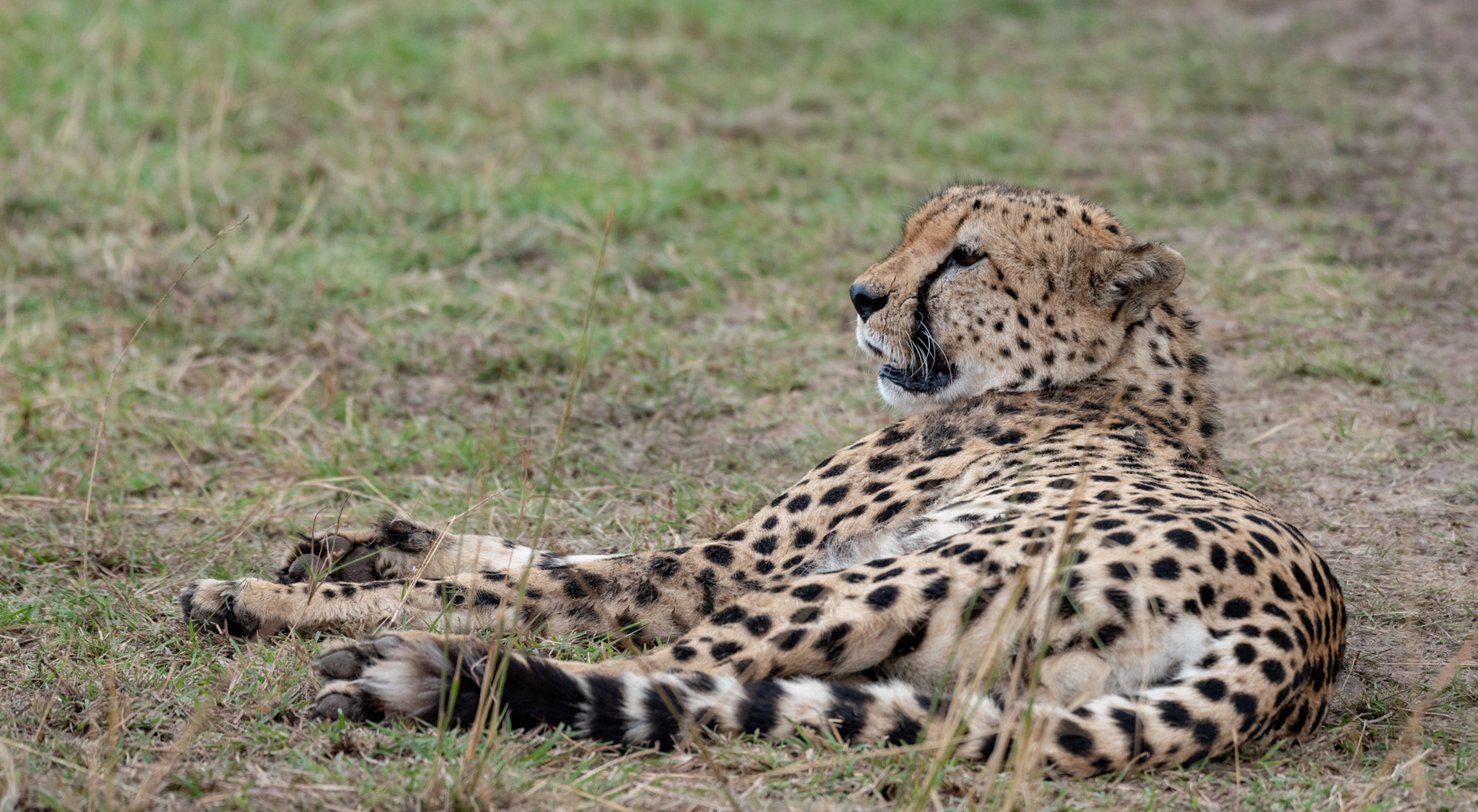All About the Masaï Mara
Geographically, the Masai Mara is the northern tip of the Serengeti, a gigantic 25,000 km2 ecosystem that is mostly in Tanzania and home to the largest land migration in the world.
The characteristic landscapes of the Masai Mara are hills as far as the eye can see, covered with green savannah or golden according to the seasons, dotted with acacias parasols. Along the rivers are concentrated trees, kingdom of the leopard. These fertile plains feed huge amounts of herbivores: Topis, bubales, buffaloes, impalas, wildebeests, zebras, elephants, cobs, gazelles de Grant, eelands...
The Mara river means "tachetée" in Masai language. It reflects the landscapes of the savannah dotted with acacias parasols, green and red herbs, and croton bushes with silver leaves.
Since colonial times, the park has had a reputation as the most beautiful wildlife observatory.
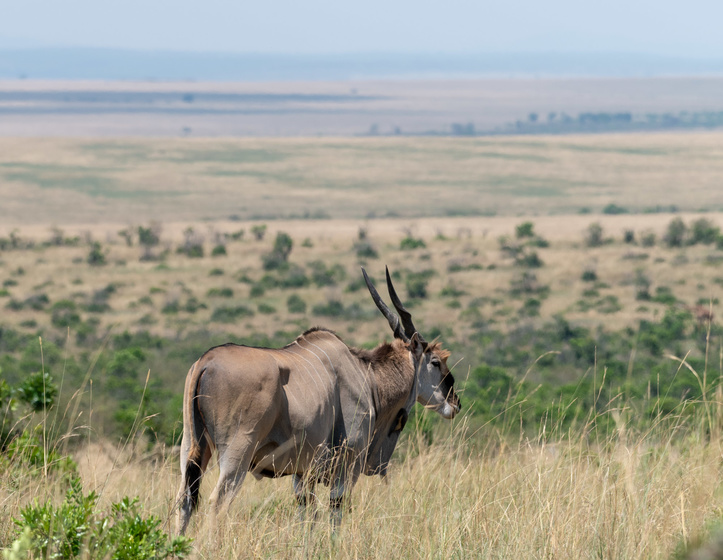
Geographically, the Masai Mara can be divided into 4 zones:
- East the Ngama Hills towards Sekenani and Keekorok. This is the most easily accessible part of the reserve, and it is home to a good number of the reserve’s accommodation.
- The central part, which is the plains between the Mara River and the Ngama Hills, where large herds of herbivores are found.
- To the northwest, the cliffs of Oloololo or Siria, which form one of the natural borders of Masai Mara. Many camps are located at the top of the escarpment, enjoying a superb view over the plain.
- To the southwest is the Mara triangle, bounded by the Mara River and the Siria escarpments. This area, which is partly made up of private concessions, is very rich in predators. A 4x4 is usually required to travel the trails. With a few exceptions, the accommodations located in the west of the park are rather luxury lodges and camps, for which transfers are often made by plane.
Seasons for a safari in the Masai Mara
- Thanks to the mountain range that forms the natural border in the north and stops clouds, there are showers all year round in the Masai Mara, which allows a large resident population of herbivores to live there. And of course that means there are also many predators. So safaris are interesting all year round.
- The intermediate season (mid-December to March) usually offers a good weather window with very few visitors, but tall grass sometimes makes it a little more difficult to observe animals.
- In the rainy season (especially in April/May) some tracks are only accessible with a 4x4. We do not recommend this period, especially for a first safari.
- From July to September/October the presence of migration brings an undeniable plus: columns of several kilometers of wildebeest run in all directions and cross the river Mara several times where the crocodiles are waiting. But on the flip side, at this time there is no room available in the park and surroundings, and you will not be the only ones to enjoy the show...
- In November a small rainy season is set up with some difficulties for safaris.
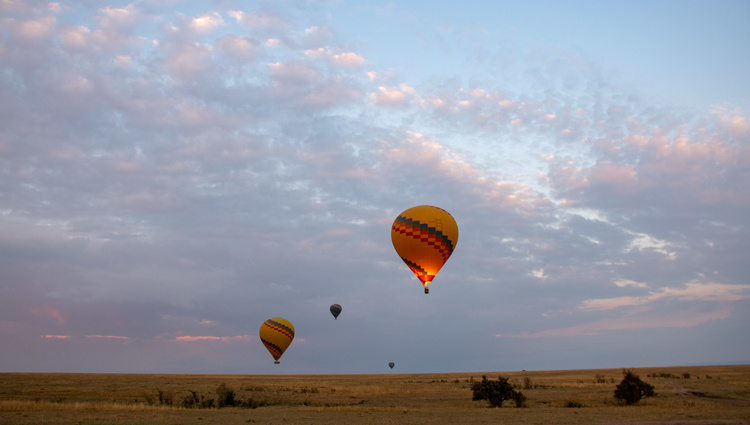
Wildlife
The vast grassland plains of the Masai Mara are home to large herbivores, such as wildebeests, buffaloes or topi (damalic) antelopes, while elephants and giraffes prefer more wooded areas. Predatory sides, if cheetahs remain in the open plains, and if leopards love the large trees that border rivers, lions are at home everywhere. Thanks to abundant food throughout the year, they are particularly large and powerful, with a beautiful dark mane for males.
The migration of wildebeest from the Serengeti to the Masai Mara
The Masai Mara is one of the largest preserved ecosystems on earth, covering 25,000 km2 if you include the Ngorongoro Conservation Area and the Serengeti. Listed as a World Heritage site, this park is the scene of the largest animal migration still existing.
This great migration brings together more than 1 million wildebeest and several hundred thousand zebras and antelopes, as well as a very large number of predators.
In the dry season, the bulk of the herd gathers in the Masai Mara, which benefits from regular thunderstorms. It’s time to go and admire the impressive spectacle of the crossings of the river Mara!
- Migration from January to May
During this part of the year, the herd is in Tanzania. In the plains of Ndutu between January and March to give birth to the babies of the year, then in the southwest of the Serengeti and the region of the Grumeti when they start the ascent towards the north. There is still a large population of resident wildebeest and zebras, who find food all year round in the fertile plains of the Masai Mara. The predators therefore also remain permanently in Kenya and do not follow the herd to Tanzania.
- Migration in June and July
Depending on the years and more or less abundant rains, wildebeest remain in the northwest of the Serengeti or quickly cross the border with the Masai Mara, which enjoys more abundant rainfall throughout the year. If the herd is often more dispersed at this time, the first wildebeest arrive in the Mara region, and we are already witnessing the crossing of small groups.
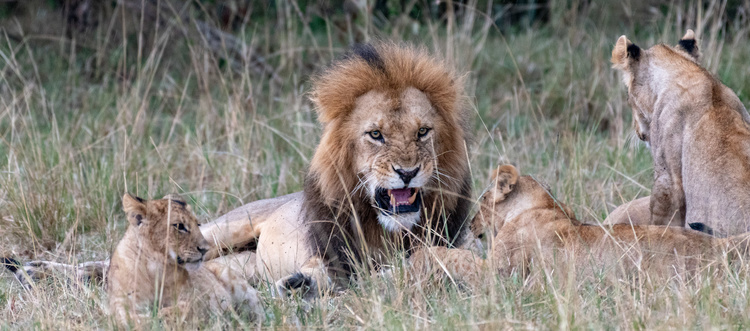
- Migration in August and September
During these two months the bulk of the herd is in the Masai Mara and the show is permanent because it sails following the showers from the East to the West of the Mara river.
This river is very deep and deep, and each crossing is a challenge, the wildebeest must launch from the top of the bank, fall over several tens of meters on the steep slope, swim among the crocodiles, then climb up to the other side! Curiously, the herds use the same crossing points every year, and these are not necessarily the easiest ones... It is therefore quite simple to go and face these passages «crossing» and wait for the show to start... All photos and television reports are made in this area. The lodges that are best placed are of course those which are very close to the Mara (South-West and central part), but the Mara is accessible from all corners of the reserve.
- Migration from October to December
The females begin to feel the need to reach the southern plains to give birth, and the herd crosses the border with the Serengeti then descends along the east side of the park this is scattered. October is a transition month and depending on the rains, the herd will stay in the Masai Mara until the end of the month or start the descent. But usually there are at least small groups until the end of October.
The Maasaï
The Maasai (or “Maasai”) have been living in this area since they migrated from the Nile basin. They continue to live on their land, where they graze their herd near the reserve.
The Maasai are a tribe rich in traditions and customs deeply rooted in their way of life. Their unique cultural practices set them apart from other African peoples and fascinate travellers around the world. The clothing of the Maasai is one of their most distinctive features. Men often wear red robes called “shukas” and crescent earrings. Maasai women are known for their colourful beaded necklaces, which are handmade and carry symbolic meaning.
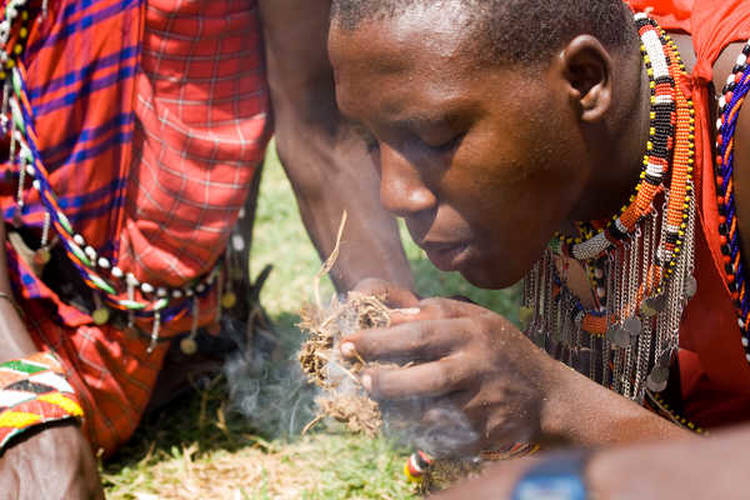
Pearls play an important role in the Maasai culture. Each pearl has a specific meaning, and the patterns and colors of the jewelry worn by a Maasai woman can reveal her social status, age and even marital status.
Ritual ceremonies are also an essential aspect of Maasai life. The initiation of boys and girls into adulthood is an important ceremony, marked by traditional dances, songs and rituals. These ceremonies strengthen the bond between generations and pass on ancestral values and knowledge to younger generations. The Masai religion is based on the concept of a single, supreme God. They believe in Engai, the god of heaven, and other spirits and deities. Maasai religious practices include offerings, prayers and rituals to ensure the protection and prosperity of their community.
The Masai religion is based on the concept of a single, supreme God. They believe in Engai, the god of heaven, and other spirits and deities. Maasai religious practices include offerings, prayers and rituals to ensure the protection and prosperity of their community.
By exploring the Maasai territories during safaris, you have the opportunity to discover the African wildlife and immerse yourself in the Maasai culture contributing to the development of these communities.

